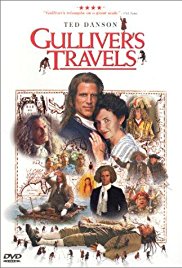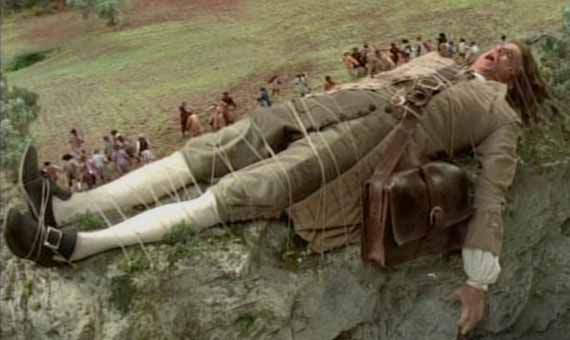1. Elements of Yahoo society are familiar to everyone. What do you see around you in the behavior of others or in the news that are similar to Yahoo society?
Suggested Response:
Answers will vary. The responses must not be mean spirited but should point out the ignorance that drives much of our society today. They will note how people seem uneducated, uncultured and unthinking, as in the Yahoo population. Students may want to give examples of Yahoo-like behaviors from their school or local community rather than the nation as a whole. All illustrative examples are acceptable.
2. Gulliver’s Travels was published in 1726. After its publication, Swift wrote bitterly about how human nature would never change. He noted that none of the criticism he wrote about was taken seriously and there were no changes in the way the society conducted itself. In what ways, if any, do you think that now, after over almost 300 years since its publication, society has improved in ways Swift may have appreciated?
Suggested Response:
Dr. M.L. King said that “The arc of the moral universe is long but it bends toward justice” and, generally, correct answers will be optimistic. However, there is still much to criticize about modern society.
Here are some talking points both pro and con:
We’re Less Yahooish – there’s hope after all: In 1726 there were no democratically elected governments existing in the world; today there are many and democratic government is recognized to be the best form of government. There is, in the modern world, universal suffrage, improvement in the lives of women, blacks, Hispanics and other minorities. Gays and lesbians are protected against discrimination and violence and in many places can marry. We have an active environmental movement. There is a growing movement of people seeking to correct the inhumane treatment of animals. While these movements have not brought as much change as many have hoped, they have pushed society in some good directions.
Internationally, Gandhian principles of non-violent mass action, as an alternative to violence, have become an effective way to change societies and governments. Examples are: U.S. Civil Rights Movement and changes in many governments, including the Soviet Union (Russia) in 1991 and many, many more. Human life is more valued. For example, in WWII, the Allies would take out whole cities in air raids killing tens of thousands of people in a day. Now, ten civilian casualties from a drone attack will cause a scandal.
We’re Just as Yahoo as Ever, OMG!: Gluttony! We’re undergoing an obesity epidemic. (Wouldn’t Swift have fun ridiculing our society for the fast food, the overeating etc.) Shallowness! Our society is increasingly focused on consumerism and movie stars. Greed: Greed and lack of financial responsibility are on the rise to such an extent that in 2008 we allowed them to crash our economy driving millions of people out of work and no one was punished!!! We ended up bailing out the idiots who caused the problem and, except for a very few, allowed them to keep their jobs; all of them got to keep their multi-million dollar unearned salaries and bonuses. Destroyers of the Environment: We are over-populating the earth and destroying it: look at Gobal Warming and the Pacific Gyre/Trash Vortex. The Victim Complex: People see themselves as victims and avoid personal responsibility for their actions.
3. [The purpose of this question is to develop a list, which the teacher can write on the board, of satiric scenes, events or characters shown in the film. Ask the class the following question and write brief 1 – 3 word indications of the responses on the board, until the class is out of ideas.] Give an example of a satiric image or scene from the film. In your example, show how Swift uses the devices of satire, such as exaggeration, name calling, reversing attributes, and changing a virtue to a vice.
Suggested Response:
Answers will vary.



